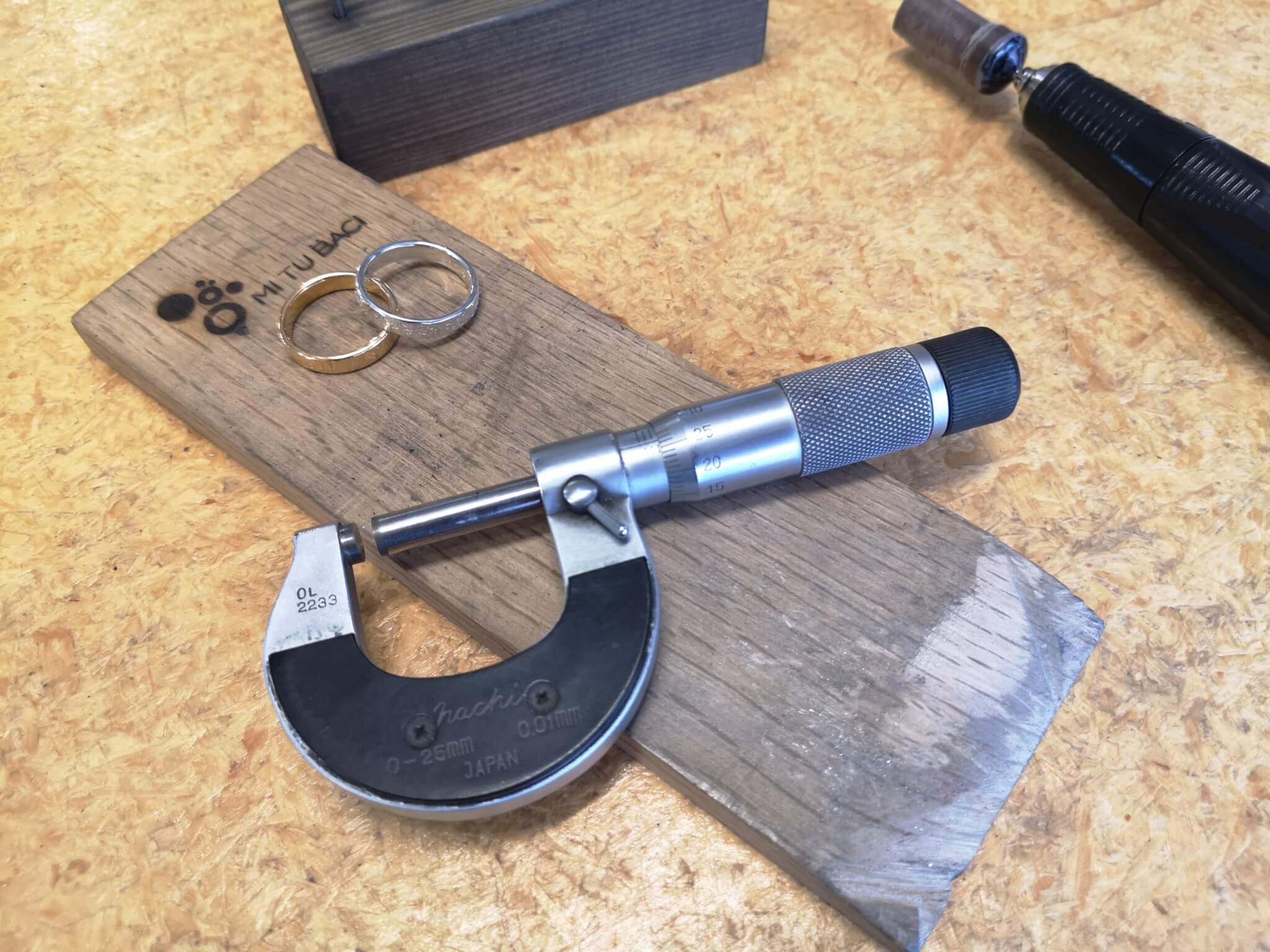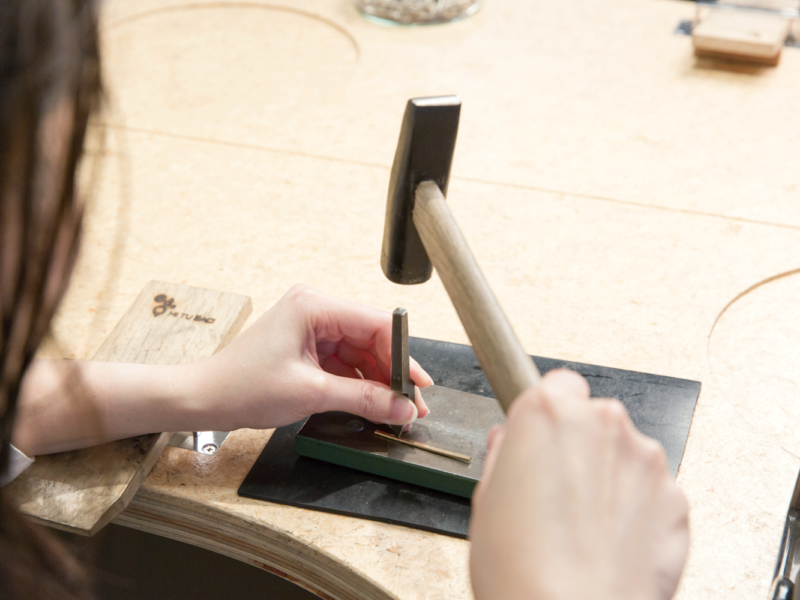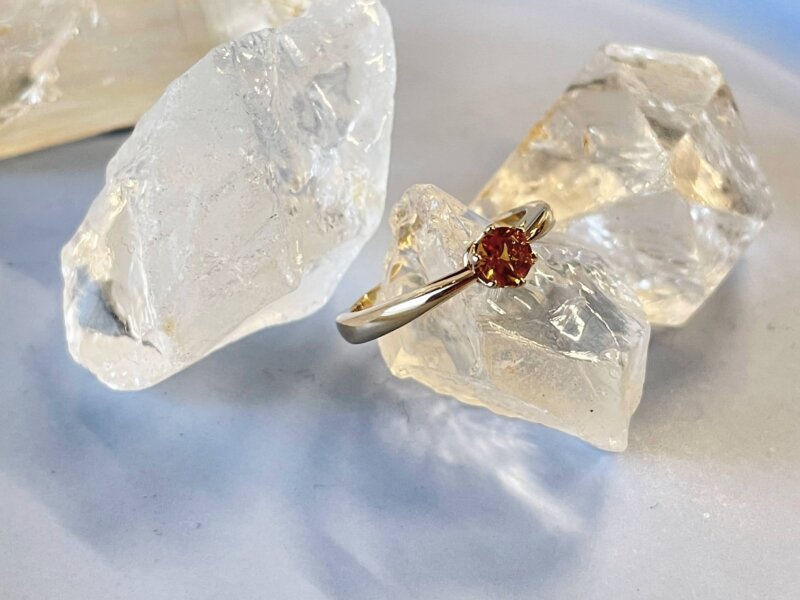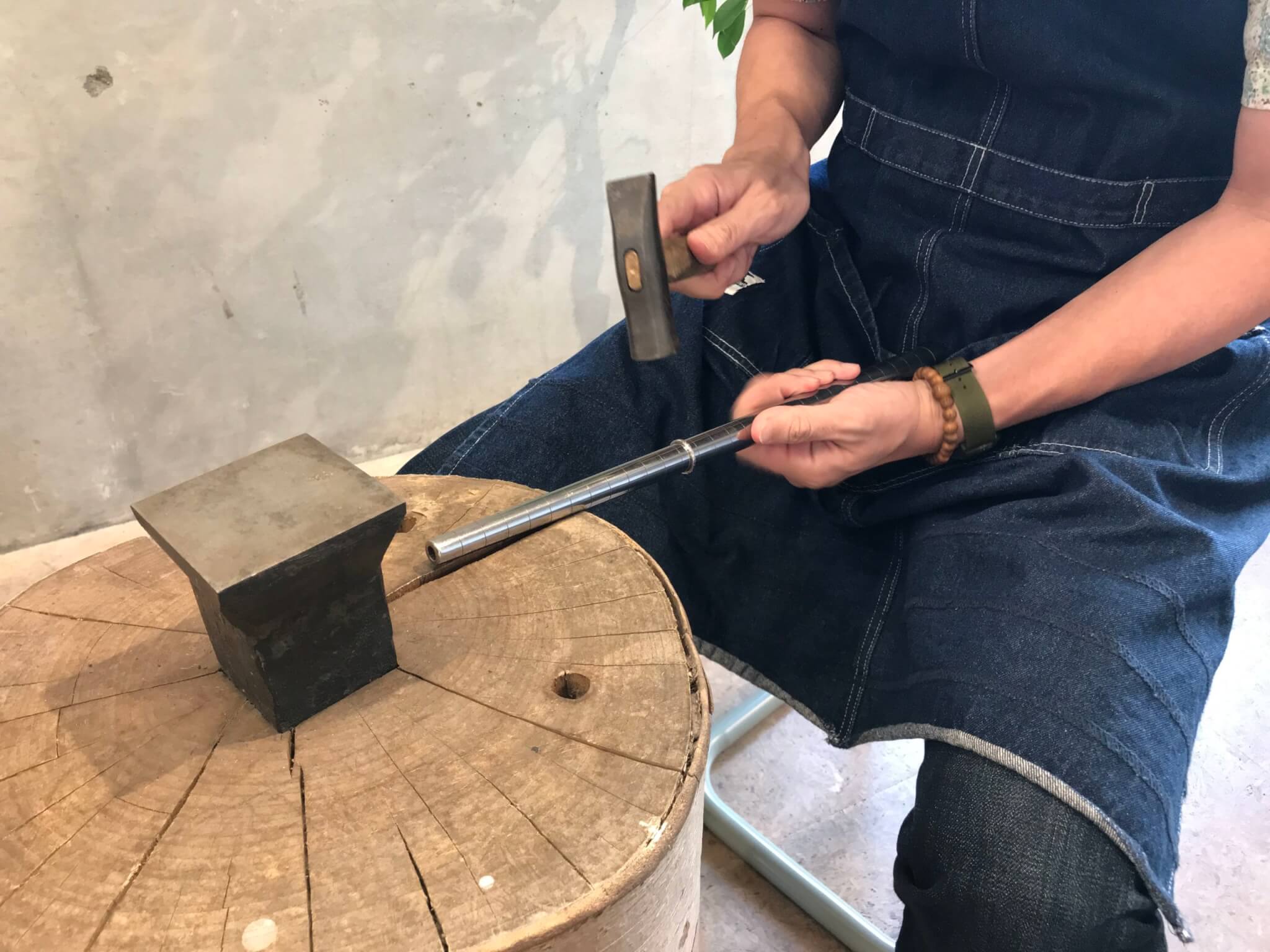Precise Measurement Down To 0.01mm
Hello, I am Shindo, a craftsman.
Today's topic may be quite difficult to understand for those who do not usually use tools, but please do not give up and read to the end.
What is a Micrometer Caliper?
In the making of our rings, it is crucial to ensure standardization in the widths. This is where the micrometer caliper comes in handy; it measures all parts of the ring width.
A "micrometer" is used as a tool to measure whether the rings are all the same width all the way around.
A micrometer is an instrument that measures, for example, the width of a ring.
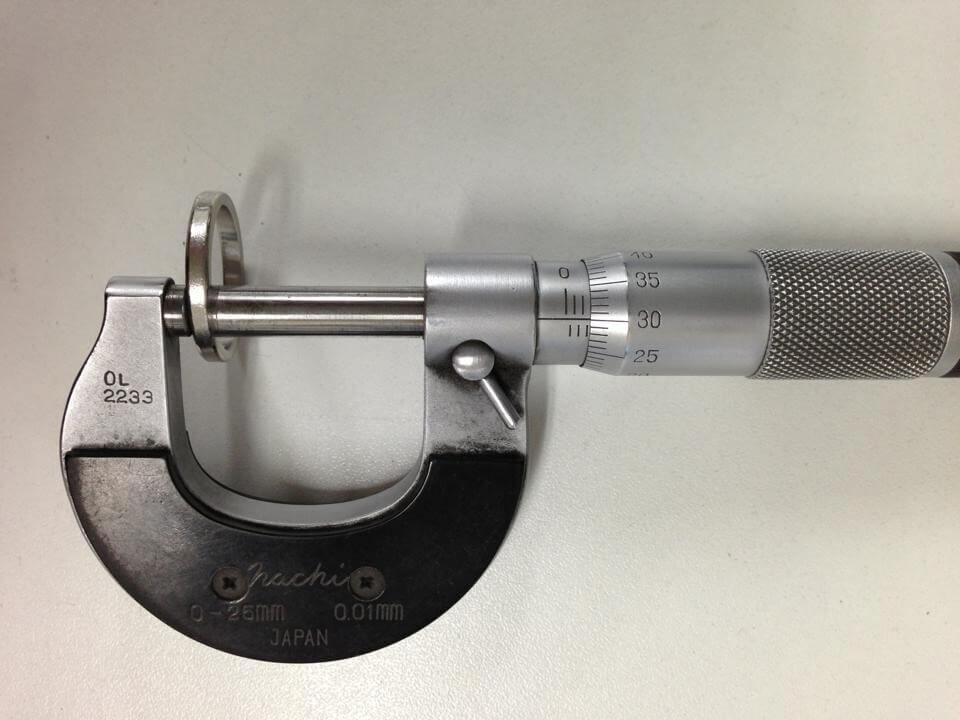
The Difference between Micrometer Caliper and Vernier Caliper
Most of us would have come across a vernier caliper in our lives, especially during our times in school. The ones we use at our atelier is the digital vernier caliper.
I often use "digital calipers" in my atelier.
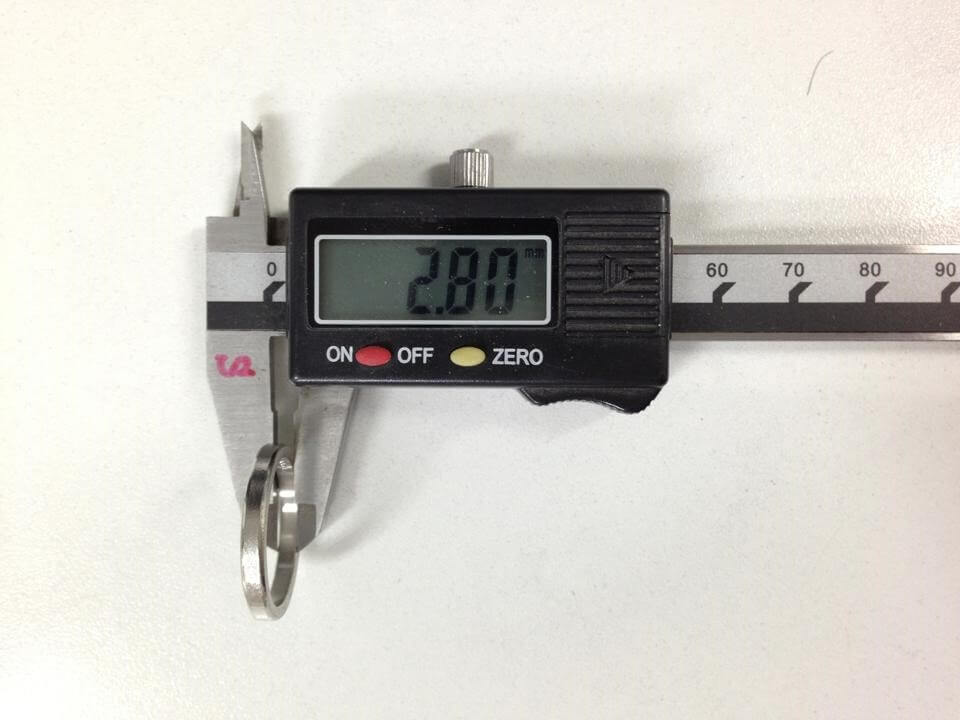
Both scales of the digital vernier caliper read up to 0.01mm. The scales' tips are thin and pointed so that this tool can measure various things, such as gemstones and pearls. However, one downside of the vernier caliper is that there may be a discrepancy of 0.01~0.02mm in the measurement depending on the force applied when using the tool.
On the other hand, the micrometer caliper can measure flat surfaces with high accuracy. Unlike the vernier caliper, the micrometer caliper is less likely to produce discrepancies due to the amount of force applied when measuring. However, its downside is that it is unsuitable for measuring fragile items such as pearls and certain gemstones. Also, it cannot measure curved or bent surfaces.
A caliper is needed to measure the thickness of the ring.
Here is a summary of the function of these tools at our atelier:
Vernier caliper is used to measure gemstones, pearls, and thicknesses of our rings.
Micrometer caliper is used to measure widths of our rings and thickness of metal plates.
There are very few errors that occur due to the force applied.
Instead, it is not suitable for measuring pearls and gemstones, which are easily damaged because of the force applied to the part to be measured.
Since the measuring surface is large, it is not possible to measure objects with curved measuring surfaces.
The uses in the atelier can be summarized as follows.
Caliper measures: thickness of jewelry, pearls, and rings
Micrometer measures: width of ring, thickness of plate (metal material)
How To Use a Micrometer Caliper?
Measurements are taken by turning the metal ratchet on the right of the micrometer caliper. As the ratchet is turned, the spindle (measurement points) open and closes. No matter which point the ring width is measured, we ensure that the difference in measurements amounts to no more than 0.03mm.
By rotating it like a screw, the part to be measured opens or closes.
The ring measured in the photo is a ring that is to be 2.7mm wide at the finished product, so I made it 2.80mm when the filing was finished.
We manually process the roundness to an error of 0.03 mm or less, no matter where the roundness is measured.
Do you know how to read the measurement on a micrometer caliper?
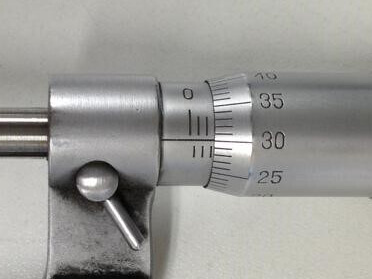
The vertical scales above the horizontal measuring scale (in the middle of the image) measures 1mm, while those below it measures 0.5mm. When the barrel on the right (displaying 25, 30, 35 etc.) is turned, the barrel moves either left or right along the horizontal measuring scale. The size of an object is measured by where the barrel intersects with the horizontal measuring scale. The image above shows a measurement of 2.5mm on the horizontal measuring scale and the barrel reading 0.30mm. The vertical scales above the horizontal measuring scale (in the middle of the image) measures 1mm, while those below it measures 0.5mm. When the barrel on the right (displaying 25, 30, 35 etc.) is turned, the barrel moves either left or right along the horizontal measuring scale.
The vertical scale on the upper side of the scale is at 1 mm intervals.
The size of an object is measured by where the barrel intersects with the horizontal measuring scale. The image above shows a measurement of 2.5mm on the horizontal measuring scale and the barrel reading 0.30mm. Totalling the figures (2.0mm+0.5mm+0.3mm), the image presents a measurement of 2.8mm. In conclusion, the micrometer caliper is one of the best tools when it comes to precision measurement. Even though digital versions are available, the analog device has its unique charm.
The scale on the rotating part on the right indicates 30, and the point to be measured moves 0.5 mm, one memory of the scale on the bottom side, after one revolution.
In the case of the current measurement, the upper scale is the second one (2mm).
We can see the 0.5 scale on the lower right of the 2 mm line, so we know that there is more than 2.5 mm.
And the scale on the rotating part is exactly 30 (0.30mm).
The total is 2.80mm (2mm + 0.5mm + 0.30mm).
This tool is indispensable to accurately measure 1/100 mm.
We have digital micrometers, but an analog machine is a nice shape too!
Thank you for reading this journal, albeit filled with more technical aspects, until the end!
